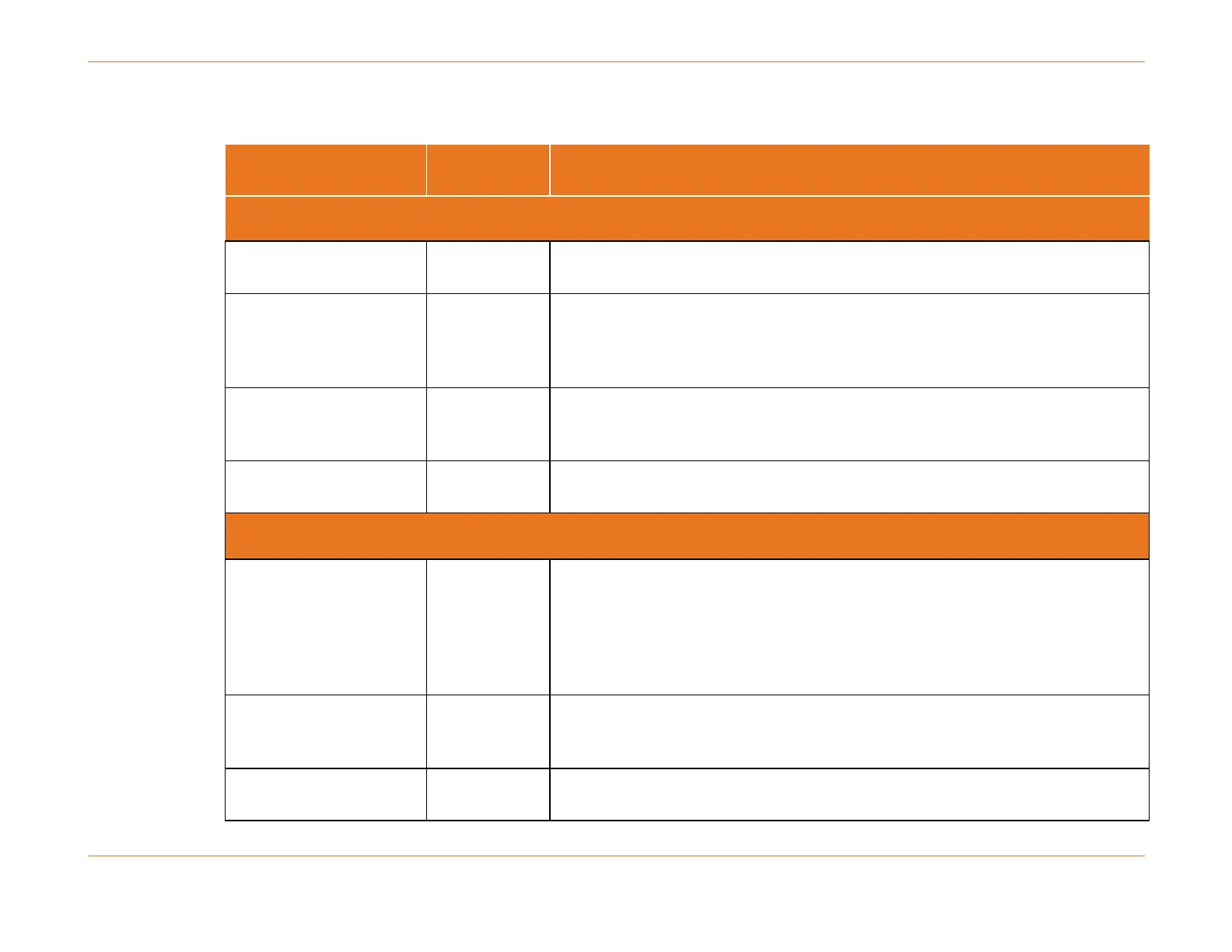Chapter 27: Converged Services (Voice and Data)
STANDARD Revision 1.0 C4® CMTS Release 8.3 User Guide
© 2016 ARRIS Enterprises LLC. All Rights Reserved. 807
Table 99. Recommended Traffic Priorities for Different Applications
Upstream Voice Bearer
Traffic: UGS and UGS/AD
The C4/c CMTS guarantees service to UGS flows, per the DOCSIS specification;
therefore, this flow type is always higher priority than any other.
Upstream Voice and Video
Signaling Traffic
ARRIS strongly recommends upstream signaling traffic be handled at traffic priority
6 to ensure service set up even in the presence of high speed data overload. This
signaling includes things like PacketCable 1.x NCS, DSx, DBC, IGMP messaging, ARP,
ICMP, SIP, etc.
High Speed Data
Upstream (Best Effort)
Priority 1 is often used for upstream high speed data. It is recommended that the
priority set is lower than US Voice and Video Signaling Traffic and higher than the
Default HSD and DSG Tunnel Data.
Default HSD and DSG
Tunnel Data
Priority 0 is the default priority applied to high speed data unless otherwise
specified via a modem config file.
Downstream Voice Bearer
Traffic
For PacketCable Voice-only, this traffic priority is fixed, per CableLabs specification.
If a mix, which includes PacketCable 1.x, of voice applications is to be deployed,
priorities should be applied at this level, in order to treat the various voice
applications equally. Of course, if it is desired that one type of voice application be
given priority over another type, priority should be set appropriately for the desired
behavior.
Downstream Voice and
Video Signaling Traffic
This value is recommended to be lower priority than the actual downstream voice
bearer traffic, but as high as possible. As in the upstream, "signaling" includes
PacketCable 1.x NCS, DSx, DBC, IGMP messaging, ARP, ICMP, SIP, etc.
Multicast video priority is set in the Service Class Name, not in the modem config
file.
